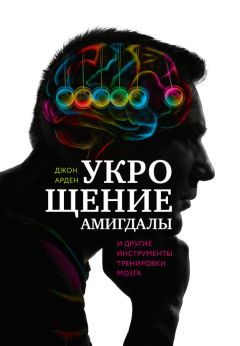Farmer, J., Zhao, X., Praag, H. van, Wodtke, K., Gage, F. H., & Christie, B. R. (2004). Effects of voluntary exercise on synaptic plasticity and gene expression in the two dentate gyrus of adult male Sprague-Dawley rats in vivo. Neuroscience, 124, 71–79.
Ford, E. S. (2002). Does exercise reduce inflammation? Physical activity and C-reactive protein among U.S. adults. Epidemiology, 13, 561–568.
Frank, M. G., Issa, N. P., & Stryker, M. P. (2001). Sleep enhances plasticity in the developing visual cortex. Neuron, 30, 275–287.
Geffken, D. F., Cushman, M., Burke, G. L., Polak, J. F., Sakkinen, P. A., & Tracy, R. P. (2001). Association between physical activity and markers of inflammation in a healthy elderly population. American Journal of Epidemiology, 153, 242–260.
Guzman-Marin, R., Suntsova, N., Methippara, M., Greiffenstein, R., Szymusiak, R., & McGinty, D. (2005). Sleep deprivation suppresses neurogenesis in adult hippocampus of rats. European Journal of Neuroscience, 22 (8), 2111–2116.
Hauri, P. J., & Fischer, J. (1986). Persistent psychophysiologic (learned) insomnia. Sleep, 9, 38–53.
Jeannerod, M., & Decety, J. (1995). Mental motor imagery: A window into the representation stages of action. Current Opinion in Neurobiology, 5, 727–732.
Kubitz, K. K., Landers, D. M., Petruzzello, S. J., & Han, M. W. (1996). The effects of acute and chronic exercise on sleep. Sports Medicine, 21 (4), 277–291.
Macquet, P. (2001). The role of sleep in learning and memory. Science, 294, 1048–1052.
Manger, T. A., & Motta, R. W. (2005, Winter). The impact of an exercise program on post traumatic stress disorder, anxiety and depression. International Journal of Emergency Mental Health, 7, 49–57.
Neeper, S. A., Gomez-Pinilla, F., Choi, J., & Cotman, C. W. (1996). Physical activity increases mRNA from brain-derived neuro-trophic factor and nerve growth factor in the rat brain. Brain Research, 726, 49–56.
O’Connor, P. J., & Youngstedt, M. A. (1995). Influence of exercise on human sleep. Exercise and Sport Science Reviews, 23, 105–134.
Pascual-Leone, A., Dang, N., Cohen, L. G., Brasil-Neto, J. P., Cammarota, A., & Hallet, M. (1995). Modulation of muscle responses evoked by transcranial magnetic stimulation during the acquisition of new fine motor skills. Journal of Neurophysiology, 74 (3), 1037–1045.
Ratey, J. (2008). Spark: The revolutionary new science of exercise and the brain. New York: Little, Brown.
Spiegel, K., Tasali, E., Penev, P., & Van Cauter, E. (2004, December 7). Sleep curtailment in healthy young men is associated with decreased leptin levels, elevated ghrelin levels and increased hun– ger and appetite. Annals of Internal Medicine, 141, 846–850.
Strohle, A., Feller, C., Onken, M., Godemann, F., Heinz, A., & Dimeo, F. (2005, December). The acute anti-panic activity of aerobic exercise. American Journal of Psychiatry, 162, 2376–2378.
Swain, R. A., Harris, A. B., Wiener, E. C., Dutka, M. V., Morris, H. D., Theien, B. E., et al. (2003). Prolonged exercise induces angiogenesis and increases cerebral blood volume in primary cortex of the rat. Neuroscience, 117, 1037–1046.
Van Praag, H., Shubert, T., Zhao, C., & Gage, F. H. (2005). Exercise enhances learning and hipppocampal neurogenesis in aged mice. Journal of Neuroscience, 25 (38), 8680–8685.
Глава 7. Социальная медицина
Ainsworth, M. D. S., Blehar, M. C., Waters, E., & Wall, S. (1978). Patterns of attachment: A psychological study of the strange situation. Hillsdale, NJ: Erlbaum.
Arbib, M. A. (2002). Language evolution: The mirror system hypothesis. In The handbook of brain theory and neural networks (2nd ed., pp. 606–611). Cambridge, MA: MIT Press.
Arden, J. (1996). Consciousness, dreams and self: A transdisciplinary approach. Madison, CT: International Universities Press.
Bartels, A., & Zekis, S. (2000). The neural basis of romantic love. Neuro Report, 11, 3829–3834.
Bassuk, S. S., Glass, T. A., & Berekman, L. F. (1998). Social disengagement and incident cognitive decline in community-dwelling elderly persons. Annals of Internal Medicine, 131, 165–173.
Berns, G. S., McClure, S. M., Pagnoni, G., & Montague, P. R. (2001). Predictability modulates human brain response to reward. Journal of Neuroscience, 21, 2793–2798.
Chungani, H. (2001). Local brain functional activity following early deprivation: A study of postinstitutional Romanian orphans. Neuro Image, 14, 184–188.
Cohen, S. (2004). Social relationships and health. American Psychologist, 59, 676–684.
Cohen, S., Doyle, W. J., Turnes, R., Alper, C. M., & Skoner, D. F. (2003). Sociability and susceptibility to the common cold. Psychological Science, 14 (5), 389–395.
Damasio, A. (2003). Looking for Spinoza’s joy, sorrow, and the feeling brain. New York: Harcourt.
Field, T. (2001). Touch. Cambridge, MA: MIT Press.
Field, T. (2002). Violence and touch deprivation in adolescents. Adolescence, 37, 735–749.
Field, T. M., Healy, B., Goldstein, S., & Bendell, D. (1988). Infants of depressed mothers show “depressed” behavior even with non-depressed adults. Child Development, 59, 1569–1579.
Fischer, L., Ames, E. W., Chisholm, K., & Savoie, L. (1997). Problems reported by parents of Romanian orphans adopted in British Columbia. International Journal of Behavioral Development, 20, 67–87.
Francis, D. D., Diorio, J., Liu, D., & Meany, M. J. (1999). Variations in maternal care form the basis for a non-genomic mechanism of intergenerational transmission of individual differences in behavioral and endocrine responses to stress. Science, 286 (5442): 1155–1158.
Fries, A. B., Ziegler, T. E., Kurian, J. R., Jacoris, S., & Pollak, S. D. (2005, November 22). Early experience in humans is associated with changes in neuropeptides critical for regulating social behavior. Proceedings of the National Academy of Sciences, 102, 17237–17240.
Frith, C. D., & Frith, U. (1999). Interacting minds: A biological basis. Science, 286, 1692–1695.
Gallese, V. (2001). The shared manifold hypothesis: From mirror neurons to empathy. Journal of Consciousness Studies, 8 (5–7), 33–50.
Gallese, V., Fadiga, L., Fogassi, L., & Rizzolatti, G. (1996). Action recognition in the premotor cortex. Brain, 119, 593–609.
Goleman, D. (2006). Social intelligence: The new science of human relationships. New York: Bantam Books.
Goodfellow, L. M. (2003). The effects of therapeutic back massage on psychophysiologic variables and immune function in spouses of patients with cancer. Nursing Research, 52, 318–328.
Grossman, K. E., Grossman, K. F., & Warter, V. (1981). German children’s behavior toward their mothers at 12 months and their father at 18 months in Ainsworth’s Strange Situation. International Journal of Behavioral Development, 4, 157–181.
Gunmar, M. (2001). Effects of early deprivation: Findings from orphanage-reared infants and children. In C. Nelson & M. Luciana (Eds.), Handbook of developmental cognitive neuroscience (pp. 617–629). Cambridge, MA: MIT Press.
Iacoboni, M. (2008). Mirroring people. New York: Farrar, Straus & Giroux.
Ijzendoorn, M. H. van, & Bakerman-Kranenburg, M. J. (1997). Intergenerational transmission of attachment: A move to the contextual level. In L. Atkinson & K. Zucker (Eds.), Attachment and psychopathology (pp. 135–170). New York: Guilford Press.
Kiecolt-Glaser, J. K., Rickers, D., George, J., Messick, G., Speicher, C. E., Garner, W., et al. (1984). Urinary cortisol levels, cellular immunocompetency, and loneliness in psychiatric inpatients. Psychosomatic Medicine, 46 (1), 15–23.
Kosfeld, M., Heinrichs, M., Zak, P. J., Fischbacher, V., & Fehr, E. (2005). Oxytocin increases trust in humans. Nature, 435 (7042), 673–676.
Koski, L., Iacoboni, M., Dubeau, M. C., Woods, R. P., & Mazziotta, J. C. (2003). Modulation of cortical activity during different imitative behaviors. Journal of Neurophysiology, 89, 460–471.
Kuhn, C. M., & Shanberg, S. M. (1998). Responses to maternal separation: Mechanisms and mediators. International Journal of Developmental Neuroscience, 16, 261–270.
Lepore, S. J., Allen, K. A. M., & Evans, G. W. (1993). Social support lowers cardiovascular reactivity to an acute stress. Psychosomatic Medicine, 55, 518–524.
Main, M., & Goldwyn, R. (1994). Adult attachment scoring and classification system. Unpublished manuscript, University of California, Berkeley.
McClelland, D., McClelland, D. C., & Kirchnit, C. (1988). The effect of motivational arousal through films on salivary immunoglobulin. Psychology and Health, 2, 31–52.
Meany, M. J., Aitken, D. H, Viau, V., Sharma, S., & Sarrieau, A. (1989). Neonatal handling alters adrenocortical negative feedback sensitivity in hippocampal type II glucocorticoid receptor binding in the rat. Neuroendocrinology, 50, 597–604.
Mesulam, M. M. (1998). From sensation to cognition. Brain, 121, 1013–1052.
Miller, G. (2005). New neurons strive to fit in. Science, 311, 938–940.
Mikulincer, M., Saber, P. R., Gillath, O., & Nitzberg, R.A. (2005, November). Attachment, caregiving and altruism: Boosting attachment security increases compassion and helping. Journal of Personality and Social Psychology, 89, 817–839.
Mikulincer, M., & Shaver, R. (2001, July). Attachment theory and intergroup bias: Evidence that priming the secure base schema attenuates negative reactions to outgroups. Journal of Personality and Social Psychology, 81, 97–115.
Miyake, K., Chen, S., & Campos, J. (1985). Infant temperment, mother’s mode of interaction, and attachment in Japan. In I. Bretheron & E. Waters (Eds.), Growing points in attachment theory and research (pp. 276–297). Ann Arbor, MI: Society for Research in Child Development.
Panksepp, J. (1998). Affective neuroscience: The foundations of human and animal emotions. New York: Oxford University Press.
Philips, M. L., Young, A. W., Senior, C., Brammer, M., Andrew, C., Calder, A. J., et al. (1997). A specific substrate for perceiving facial expression of disgust. Nature, 389, 495–498.
Remington, R. (2002). Calming music and hand massage with agitated elderly. Nursing Research, 54, 317–323.
Rizzolatti, G., & Arbib, M. A. (1998). Language within our grasp. Trends in Neurosciences, 21 (5), 188–194.
Rolls, E. T., O’Doherty, J., Kringelbach, M. L., Francis, S., Bowtell, R., & McGlone, F. (2003). Representations of pleasant and painful touch in the human orbital frontal and cingulated cortices. Cerebral Cortex, 13, 308–317.
Russell, D. W., & Cutrona, C. E. (1991). Social support, stress, and depression symptoms among the elderly: Test of a process model. Psychology and Aging, 6, 190–201.
Rutter, M., Kreppner, J., & O’Connor, T. (2001). Specificity and heterogeneity in children’s responses to profound institutional deprivation. British Journal of Psychiatry, 179, 97–103.
Saarni, C., Mumme, D. L., & Campos, J. J. (2000). Emotional development: Action, communication, and understanding. In W. Damon & N. Eisenberg (Eds.), Handbook of child psychology: Vol. 3. Social, emotional, and personality development (5th ed., pp. 237–309). Hoboken, NJ: Wiley.
Sabbagh, M. A. (2004). Understanding orbital frontal contributions to the theory-of-mind reasoning: Implications for autism. Brain and Cognition, 55, 209–219.
Sapolsky, R. M. (1990). Stress in the wild. Scientific American, 262, 116–123.
Siegal, D., & Varley, R. (2002). Neural systems involved in the “theory of mind.” Nature Reviews Neuroscience, 3, 267–276.
Shaver, P. (1999). In J. Cassidy & P. Shaver (Eds.), Handbook of attachment theory: Research and clinical applications. New York: Guilford Press.
Spitzer, S. B., Llabre, M. M., Ironson, G. H., Gellman, M. D., & Schneiderman, N. (1992). The influence of social situations on ambulatory blood pressure. Psychosomatic Medicine, 54, 79–86.
Thomas, P. D., Goodwin, J. M., & Goodwin, J. S. (1985). Effect of social support on stress related changes in cholesterol level, uric acid level, and immune function in an elderly sample. American Journal of Psychiatry, 142, 732–737.
Wallin, D. (2007). Attachment in psychotherapy. New York: Guilford Press.
Weaver, I. C. G., Cervoni, N., Champagne, F. A., D’Alessio, A. C., Sharma, S., Seckl, J. R., et al. (2004, August). Epigenetic programming by maternal behavior. Nature Neuroscience, 7, 847–854.
Weller, A., & Feldman, R. (2003). Emotion regulation and touch in infants: The role of cholecystokinin and opiods. Peptides, 24, 779–788.
Wexler, B. (2006). Brain and culture: Neurobiology, ideology, and social change. Boston: MIT Press.
Глава 8. Стрессоустойчивость и мудрость
Abbott, R., White, L. R., Ross, G. W., Masaki, K. H., Curb, J. D., & Petrovitch, H. (2004, September 22). Walking and dementia in physically capable elderly men. Journal of the American Medical Association, 292, 1447–1453.
Alexander, G. E., Furey, M. L., Grady, C. L., Pietrini, P., Brady, D. R., Mentis, M. J., et al. (1997). Association of premorbid intellectual function with cerebral metabolism in Alzheimer’s disease: Implications for the cognitive reserve hypothesis. American Journal of Psychiatry, 154, 165–172.
Allen, J. S., Bruss, J., Brown, C. K., & Damasio, H. (2005). Normal neuroanatomical variation due to age: The major lobes and a parcellation of the temporal region. Neurobiology of Aging, 26, 1245–1260.
Anokhin, A. P., Bibaumer, N., Lutzenberger, W., Niholaev, A., & Vogel, F. (1996). Age increases brain complexity. Electroencephalography and Clinical Neurophysiology, 99, 63–68.
Bartzokis, G., Cummings, J. L., Sultzer, D., Henderson, V. M., Nuechtherlein, K. H., & Mintz, J. (2004). White matter structural integrity in healthy aging adults and patients with Alzheimer’s disease. Archives of Neurology, 60, 393–398.
Bellert, J. L. (1989). Humor: A therapeutic approach in oncology nursing. Cancer Nursing, 12 (2), 65–70.
Berk, L. S., Tan, S. A., Nehlsen-Cannrella, S., Napier, B. J., Lee, J. W., Lewis, J. E., & Hubbard, R. W. (1988). Humor-associated laughter decreases cortisol and increases spontaneous lympho-cyte blastogenesis. Clinical Research, 36, 435A.
Bigler, E. D., Anderson, C. V., & Blatter, D. D. (2002). Temporal lobe morphology in normal aging and traumatic brain injury. American Journal of Neuroradiology, 23, 255–266. Cabeza, R. (2002). Hemispheric asymmetry reduction in older adults. The HAROLD model. Psychology and Aging, 17 (1), 85–100.





![Rick Page - Make Winning a Habit [с таблицами]](https://cdn.my-library.info/books/no-image.jpg)